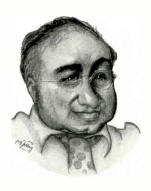International
Musician began publication in 1901 as the
membership magazine of the American
Federation of Musicians. It continues to be
published today and selected current content
may be seen at the AFM website.
The history of the AFM was connected with
the radio and broadcast industries from the
very beginning of electronic communication. |
 |
|
Quick
Search |
|
|
Find issues with
content you want!
Click the Question Mark |
|
James Caesar Petrillo
Influential head of the
American Federation of Musicians
from the late 30's until the 50's:
Click to see a page of documents
about him. |
 |
The Musicians and Petrillo
Flattering book by
Leiter |
 |
For the Record
A Biography by
Burlingame |
 |
The AFM Story
A Brief American
federation of Musicians History.
|
| Our history began in 1896 when musicians
gathered in Indianapolis and organized the
American Federation of Musicians (AFM) for
“any musician who receives pay for his
musical services.” Representing 3,000
members, AFM was granted a charter by the
American Federation of Labor (AFL). |
| Wherever there was music, there were
musicians organizing in the early 20th
century—in theaters, restaurants, night
clubs, hotel ballrooms, amusement parks,
carnivals, symphonies, operas, ballets and
increasingly at theaters as accompaniment
for silent films. |
| In 1927
the first “talkie” film was released
and within two years, 20,000
musicians lost their jobs performing
in theater pits for silent films.
This was not the first—or the last
time—that technological advances
would transform musicians’ work |
|
Yet musicians remained strong and
established minimum wage scales for
vitaphone, movietone & phonograph record
work. In 1938, film companies signed their
first contract with AFM. Musicians continued
organizing in orchestras, radio and in the
making of film scores. But musicians were
losing income as phono records replaced radio
orchestras and jukeboxes competed with live
music in nightclubs. In 1942, AFM members
embarked on one of their biggest campaigns—a
recording ban.
|
|
Yet musicians remained strong and
established minimum wage scales for
vitaphone, movietone & phonograph record
work. In 1938, film companies signed their
first contract with AFM. Musicians continued
organizing in orchestras, radio and in the
making of film scores. But musicians were
losing income as phonorecords replaced radio
orchestras and jukeboxes competed with live
music in nightclubs. In 1942, AFM members
embarked on one of their biggest campaigns—a
recording ban.
|
|
Yet musicians remained strong and
established minimum wage scales for
vitaphone, movietone & phonograph record
work. In 1938, film companies signed their
first contract with AFM. Musicians continued
organizing in orchestras, radio and in the
making of film scores. But musicians were
losing income as phonorecords replaced radio
orchestras and jukeboxes competed with live
music in nightclubs. In 1942, AFM members
embarked on one of their biggest campaigns—a
recording ban.
|
|
Musicians went on strike in 1942 shutting
down the U.S. recording market for two years
until they won. By standing together, they
forced the recording industry to establish a
royalty on recording sales to employ
musicians at live performances.
|